The Huawei P8 Lite Review
by Brandon Chester on July 27, 2015 8:00 AM EST- Posted in
- Smartphones
- Huawei
- Mobile
Display
The Huawei P8 Lite has a 5.0" 1280x720 IPS display. We've seen great improvements to both display resolution and color accuracy in recent years, and you can now get highly accurate 720p panels in devices that cost only $150-$200. Some devices even manage to squeeze a 1080p panel onto a $200 device. Since competing on resolution has become difficult, targeting greater color accuracy has become the next step of display improvements. To evaluate the accuracy of the P8 Lite's display we turn to our standard smartphone display workflow. As always, measurements are performed with X-Rite's i1Pro 2 spectrophotometer and SpectraCal's CalMAN 5 software, with the exception of contrast measurements which are done with an i1Display Pro colorimeter.
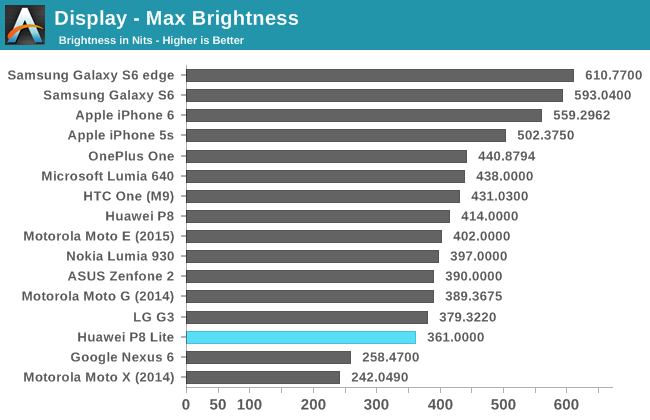
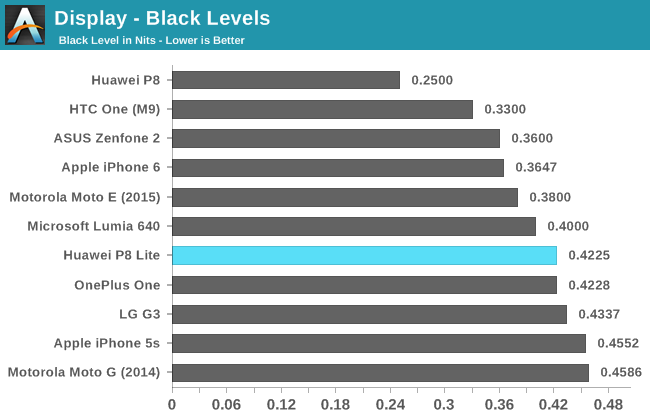
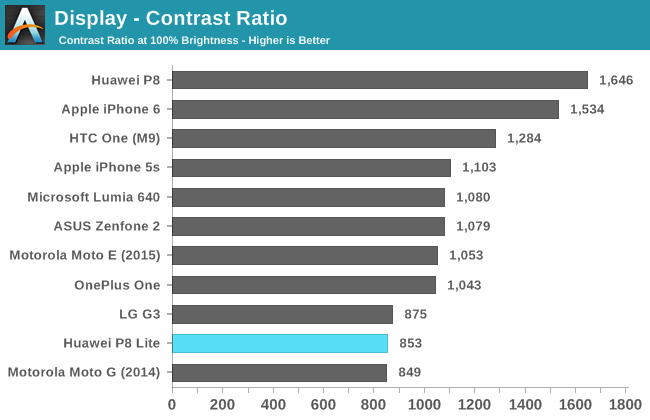
At 361 nits, the P8 Lite's display isn't quite as bright as I would expect. Despite this, the black level is fairly high, which leads to one of the lower contrast ratios on record. At this point having your brightness far below 400 nits is really not acceptable, as it makes the device very difficult to use in the sun or with other unforgiving lighting. The high black level also means that the wash out from external lighting is even more noticable.
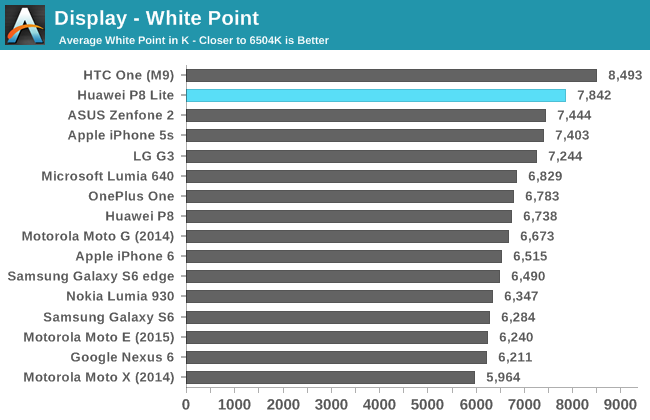

Greyscale results from the P8 Lite also end up being less than optimal. With a price point of $249, Huawei is within the mid-range segment of the market. Devices like the Lumia 640 have shown that it's completely possible to ship an accurate display even with price constraints. The P8 Lite's display is far too blue, and there's a high degree of error in shades of grey which increases as they move toward complete white.
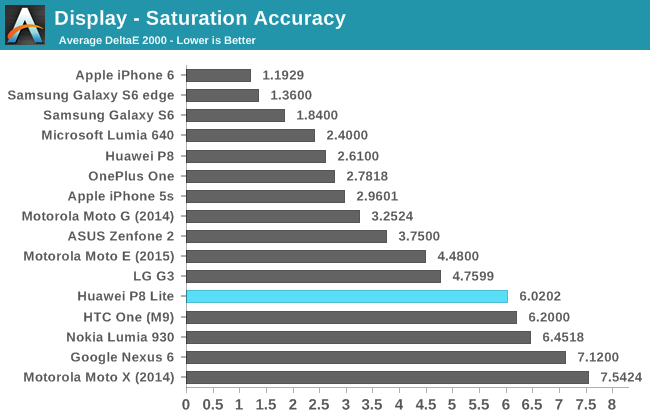
The P8 Lite again performs poorly in the saturation sweep test. Blue shows some saturation compression, with slight oversaturation until it hits 80% and then undersaturation for the deepest shades of blue. Magenta misses the mark severely, with 20% magenta actually being what would be a very accurate 20% blue. The level of inaccuracy is high enough to be fairly evident throughout the UI, which is very disappointing.
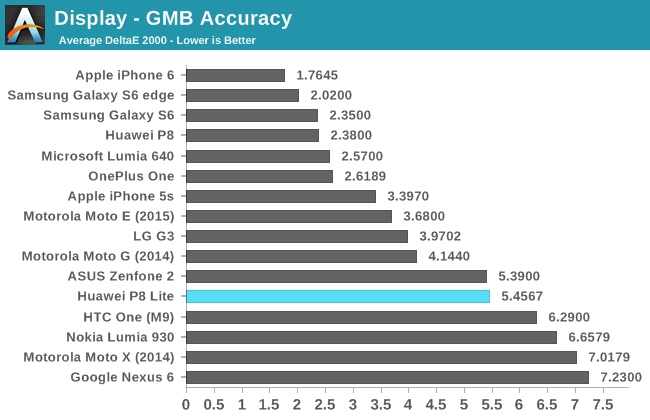
In the ColorChecker test the P8 Lite again doesn't do very well. The inaccuracy with both the greyscale and the primary and secondary colors means there's not much hope of rendering color mixtures accurately. As you can see in the color comparator image, there's a high level of error in everything except the greens and cyan. It's fairly clear when looking at images or videos that they don't look quite right.
Overall, the P8 Lites display is fairly disappointing. We've seen great improvement in display quality in the low end and mid range parts of the market, with $149 devices like the Lumia 640 providing very high accuracy and good sharpness, and the ASUS Zenfone 2 providing decent accuracy and a very high resolution. The 5.0" 720p display on the P8 Lite is decently sharp, but the inaccuracy is significant.


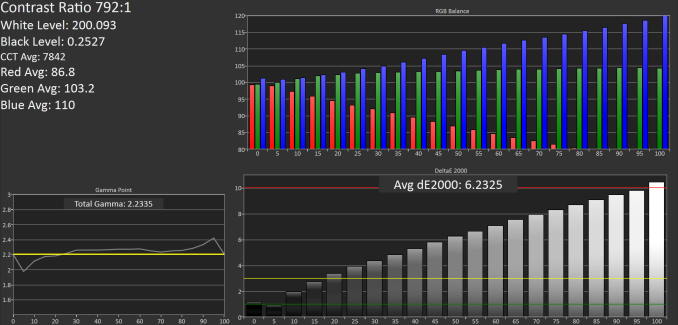

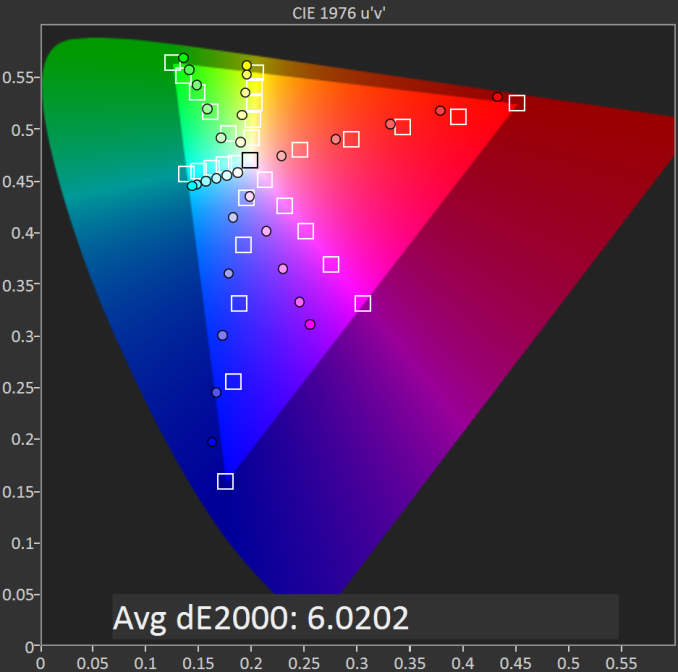










45 Comments
View All Comments
Buk Lau - Wednesday, July 29, 2015 - link
It is capable of QC 2.0, they just don't ship you with a charger and you just have to get it yourself from somewherezebrax2 - Monday, July 27, 2015 - link
Error in the specifications table showing A7 instead of A53.jjj - Monday, July 27, 2015 - link
Disturbing that for a SoC known for it's overheating capabilities (yes this one too), you fully ignore the issue and don't look for throttling."Snapdragon 615 is really the best you're going to get at this price point"
That is clearly a false statement and not sure how can you make it. SD615 is likely the worst A53 based solution in this price range clock for clock and not just in CPU. If you factor in that others are going higher clocks (without overheating) in the same price band and even higher clocks for slightly costlier and more capable SoCs , your statement becomes even more absurd.
But that's when you factor in the SoC price not the device price. If you go by device price, the OnePlus One is 250$ and if you factor in China, a bunch of faster devices are at or very close that price.
T1beriu - Monday, July 27, 2015 - link
Source?jjj - Monday, July 27, 2015 - link
For what? SD615 can't do 1.7GHz and pretty much any device with those clocks is know to have problems. At 1.5GHz it throttles little if at all but that can depend on the device and requires investigation. As for how it does against competing 8xA53 SoCs from Hisilicon (hey those are actually worse), Marvell, Mediatek and Samsung it would take some time(that i don't have) to find a bunch of reasonably good links since too many can't be bothered to look beyond Qualcomm, just like AT loves to do.djw39 - Monday, July 27, 2015 - link
How can you say the Snapdragon 615 is "likely the worst A53 based solution in this price range" then?LiverpoolFC5903 - Tuesday, July 28, 2015 - link
The MTK 6752 is significantly faster than the SD 615 and runs cooler too, despite all the ores being clocked at a relatively high 1.7ghzThe 615 flatters to deceive and is hamstrung by memory bandwith issues and thermals. If they had provided a dual channel 32 bit RAM like the older Snapdragon 600 and paired it with the Adreno 320, it would have been a killer mid range chip. Alas,this is par for the course these days with Qualcom chipsets.
One more observation, the Zenfone 2 is absolutely suberb in terms of performance/price/ Nothing else in the midrange comes close to it in terms of both CPU and GPU performance. The 2.3 GHZ and 4 GB model at 300 USD performs as good as any Snapdragon 801 device and trades blows with the 805.
AndrewJacksonZA - Tuesday, July 28, 2015 - link
Totally off topic, so apologies in advance, but..."T1beriu" as your nick? Is it meant to be in reference to the Tiber River? Tiberius Caesar? Tiberium? Brigadier General Mark Jamison Sheppard must know! :-)
twizzlebizzle22 - Monday, July 27, 2015 - link
What's the benefit of using big little with the same core architecture between the clusters.Can't one cluster scale back under lighter workloads?
cmikeh2 - Monday, July 27, 2015 - link
You can fab the transistors for the two different clusters differently. For the high performance cluster, you would use a higher leakage, faster transistor (and power gate when not in use) and for the low power cluster use slower, but lower leakage transistors.